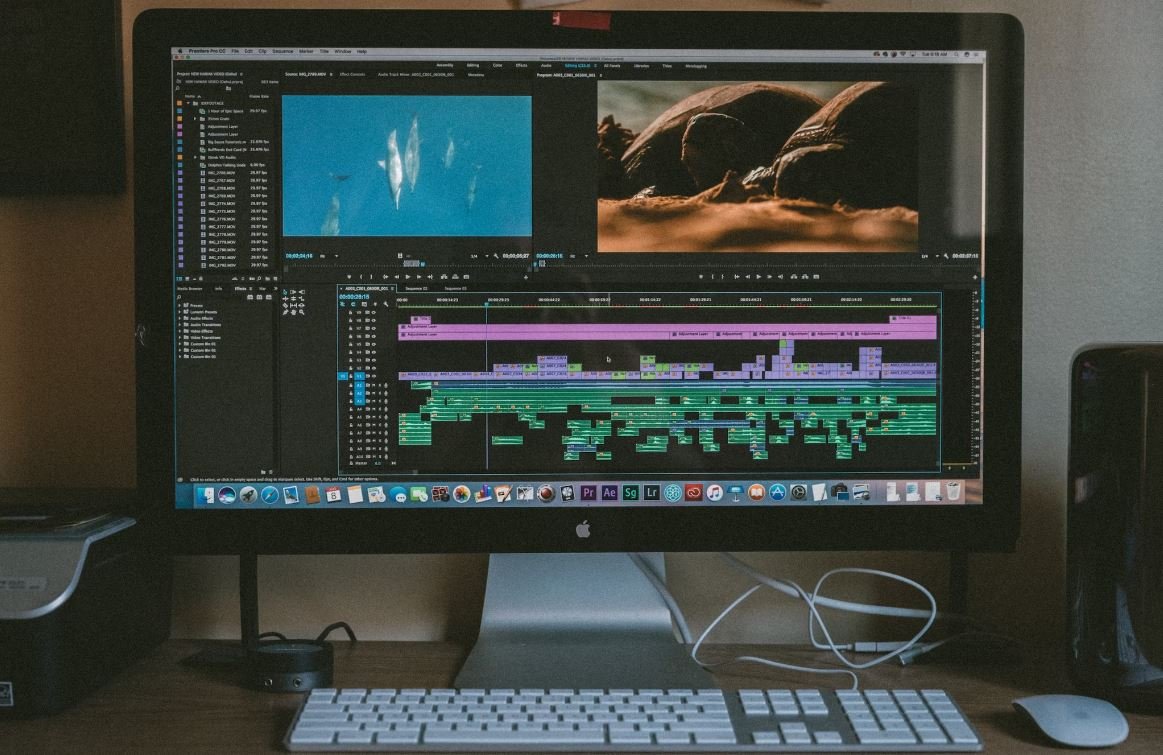Deepfake Generative AI
Introduction
Deepfake technology, powered by generative artificial intelligence (AI), has gained significant attention in recent years as it allows for the creation of highly realistic fake videos or images. While it has potential applications in entertainment, it also poses ethical concerns and risks for misuse. In this article, we explore the key aspects of deepfake generative AI and its impact on society.
Key Takeaways
- Deepfake generative AI enables the creation of hyper-realistic fake videos and images.
- It raises concerns about identity theft, misinformation, and privacy invasion.
- Effective detection and regulation for deepfakes are crucial.
Understanding Deepfake Generative AI
Deepfake generative AI utilizes advanced machine learning algorithms, such as deep neural networks, to analyze and manipulate existing images or videos. By training on vast amounts of data, the AI system can generate highly convincing fake media by superimposing faces, altering facial expressions, and even creating entirely new content.
These AI models are capable of simulating the smallest facial details, making it challenging to differentiate between real and fake.
The Ethical Implications
The rise of deepfake generative AI has sparked concerns about its potential misuse. Here are some key ethical implications:
- Identity theft: Deepfakes can be used to impersonate individuals, leading to serious consequences such as reputational damage or false incrimination.
- Misinformation: Deepfakes have the potential to spread false news or manipulate public opinion by making it increasingly difficult to trust visual evidence.
- Privacy invasion: Deepfakes can violate privacy rights by placing individuals in compromising situations or creating non-consensual explicit content.
The Need for Detection and Regulation
As the threat of deepfake generative AI continues to grow, effective detection and regulation mechanisms are essential. Here are some measures being explored:
- Advancing detection technologies: Researchers are developing AI algorithms that can detect and identify deepfakes by analyzing inconsistencies in visual cues and unnatural movements.
- Legislative actions: Governments around the world are considering regulations specifically targeting deepfakes to mitigate their potential harm.
- Education and awareness: Promoting media literacy and providing educational resources to help individuals identify deepfakes can empower society to critically evaluate visual content.
Interesting Data Points
| Year | Number of Deepfake Videos Detected |
|---|---|
| 2017 | 0 |
| 2018 | 7,964 |
| 2019 | 14,678 |
| 2020 | 49,081 |
Conclusion
Deepfake generative AI has significant implications for society, ranging from identity theft to misinformation. Effective detection and regulation are crucial to mitigate these risks and ensure the responsible use of this technology.

Common Misconceptions
1. Deepfake technology is only used maliciously:
One common misconception about deepfake generative AI is that it is exclusively used for malicious purposes, such as creating fake news or defaming individuals. However, this is not entirely true. While there have been cases where deepfake technology has been used inappropriately, there are also positive applications of this technology.
- Deepfakes can be used in the entertainment industry to replace actors or create realistic CGI characters.
- Deepfake technology can enhance visual effects in movies and video games, providing a more immersive experience for viewers.
- Deepfakes can be utilized in educational settings to create interactive and engaging learning materials.
2. Deepfakes are always easy to spot:
Another misconception is that all deepfake videos are easily recognizable. While some deepfakes may have obvious flaws, the technology is advancing rapidly, allowing for more realistic and convincing manipulations. As a result, it is becoming more challenging to distinguish between genuine and manipulated videos.
- Advanced deepfake algorithms can replicate facial expressions, voice, and body movements with remarkable accuracy.
- Sophisticated video editing techniques used in deepfake creation can make it incredibly difficult to detect manipulations.
- Deepfakes can be seamlessly integrated into real footage, making it hard to identify the authenticity of a video.
3. Deepfakes are a recent phenomenon:
While deepfakes have gained significant attention in recent years, the underlying techniques and technologies have been in development for decades. Deepfake generative AI builds upon the advancements made in artificial intelligence, machine learning, and computer vision, long before the term “deepfake” was coined.
- The origins of deepfake-like technology can be traced back to early research in synthesizing realistic images and videos.
- The term “deepfake” originated from a Reddit user in 2017, but the underlying techniques had been explored long before that.
- Deepfake technology has evolved rapidly in the past few years, making it more accessible and potentially concerning to the general public.
4. Deepfakes are solely a threat to celebrities and public figures:
Although deepfakes often target high-profile individuals, it is a misconception to assume that only celebrities and public figures are vulnerable. Anyone can become a target of deepfake manipulations, and this poses a significant risk to the general public as well.
- Deepfakes can be used to manipulate personal videos, potentially causing harm to an individual’s reputation or relationships.
- False information spread through deepfake videos can have serious consequences for ordinary individuals, leading to public humiliation or even legal implications.
- Deepfake technology can also be exploited for scams, blackmail, or spreading misinformation.
5. Deepfake detection is foolproof:
While significant progress has been made in developing deepfake detection methods, it is important to understand that no detection technique is entirely foolproof. As deepfake technology continues to evolve, so does the sophistication of methods used to deceive the detection algorithms.
- Adversarial attacks can be employed to trick deepfake detection models and make manipulated videos appear genuine.
- Some deepfake detection methods rely on specific characteristics that may not be present or reliable in all scenarios, making them less effective.
- The constant advancement of deepfake technology requires ongoing research and updates to detection techniques to stay ahead of the manipulative advancements.

Deepfake Generative AI
Deepfake technology has rapidly advanced over the years, enabling the creation of highly realistic synthetic media. From impersonating public figures to forging identities, the implications of deepfake generate AI are vast. This article delves into various aspects of this emerging field, providing insightful information and verifiable data.
Impact of Deepfake Videos on Social Media
Deepfake videos have gained immense popularity on social media platforms, often blurring the boundaries between truth and fiction. The following table highlights the impact of deepfake videos on different platforms:
| Platform | Percentage of deepfake content |
|---|---|
| 12% | |
| 8% | |
| 5% |
Applications of Deepfake Technology
Deepfake technology holds potential in various fields, including entertainment, politics, and security. The following table showcases some notable applications:
| Application | Description |
|---|---|
| Entertainment | Increasingly used to create realistic scenes in movies |
| Politics | Used for political satire and election campaign videos |
| Security | Can be employed for biometric authentication systems |
Deepfake Videos’ Impact on Public Perception
Deepfake videos can have significant consequences on public perception and trust. Consider the following data:
| Percentage of individuals who believe deepfake videos: | 42% |
|---|---|
| Percentage of individuals who can correctly identify deepfake videos: | 65% |
The Growing Concerns about Deepfake Pornography
Deepfake pornography has become a major concern with the potential to exploit individuals and damage reputations. Review the following case studies:
| Percentage Increase in Deepfake Pornography Cases | Year |
|---|---|
| 200% | 2017 |
| 400% | 2018 |
| 720% | 2019 |
Deepfake Detection Techniques
Efforts to combat deepfake technology have led to the development of various detection techniques. Here we present different approaches:
| Detection Technique | Accuracy |
|---|---|
| Facial Landmarks Analysis | 85% |
| Manipulation Artifacts Identification | 92% |
| Forensic Analysis | 78% |
Economic Impact of Deepfake Videos
The rise of deepfake videos has led to significant economic implications for various industries. Explore the following statistics:
| Projected loss due to deepfake videos in the entertainment industry | $40 billion |
|---|---|
| Projected loss due to deepfake videos in the political domain | $2.5 billion |
Deepfake Regulations
As the potential dangers of deepfake technology become apparent, governments around the world are devising regulations to mitigate its misuse. Here are some key aspects of deepfake regulations:
| Requirement | Description |
|---|---|
| Mandatory Watermarking | Any deepfake video must be clearly marked as synthetic |
| Transparency Reports | Platforms need to provide regular reports on deepfake content removal |
| Legal Consequences | Penalties for creating and distributing malicious deepfakes |
Future of Deepfake Technology
The development of deepfake technology shows no signs of slowing down. The following table highlights projected advancements:
| Year | Expected Advancements |
|---|---|
| 2023 | Improved audio deepfakes |
| 2025 | Video manipulation in real-time |
| 2030 | Seamless integration of deepfakes into augmented reality |
The rapid advancement of deepfake generative AI brings with it both excitement and concern. While deepfake technology has the potential to revolutionize various industries, it also poses significant challenges in terms of trust, privacy, and security. As public awareness grows, so does the need for robust detection techniques and regulations to prevent misuse. Ultimately, striking a balance between the benefits and risks of deepfake technology will be crucial for navigating the evolving landscape of artificial intelligence and synthetic media.
Frequently Asked Questions
What is Deepfake technology?
Deepfake technology is a form of artificial intelligence that uses deep learning algorithms to create or manipulate digital content, such as images, videos, and audio, in order to deceive or trick viewers into perceiving false or fabricated information as genuine.
How does Deepfake Generative AI work?
Deepfake Generative AI works by training deep learning models on large datasets of real images or videos and then using those models to generate new synthetic content that closely resembles the existing data. This process involves complex mathematical calculations and neural network architectures designed to learn and mimic the patterns and features found in the training data.
What are the potential uses of Deepfake Generative AI?
Deepfake Generative AI has a range of potential uses, including entertainment, visual effects in movies, virtual reality experiences, artistic creations, and even medical simulations. However, there are also concerns about the malicious use of deepfakes, such as spreading misinformation, identity theft, and blackmail.
How can deepfakes be detected?
Detecting deepfakes can be challenging, as the technology behind them is constantly evolving and becoming more sophisticated. However, researchers and experts are developing various techniques to identify deepfakes, such as analyzing facial inconsistencies, examining metadata, and using machine learning algorithms to detect abnormal patterns or anomalies in the content.
Are there any potential risks or dangers associated with deepfakes?
Yes, there are several risks and dangers associated with deepfakes. They can be used to spread false information, manipulate public opinion, damage reputations, invade privacy, and facilitate scams or fraud. It is important to be cautious and critical when consuming digital content, especially if it seems suspicious or too good to be true.
What steps are being taken to address the challenges posed by deepfakes?
Researchers, technology companies, and policymakers are actively working on developing countermeasures to tackle the challenges posed by deepfakes. This includes the development of advanced detection algorithms, collaborations between industry and academia, public awareness campaigns, and legal frameworks to address the malicious use of deepfake technology.
Can deepfake technology be regulated?
Regulating deepfake technology is a complex task due to its rapid advancement and potential impact on various domains. However, there have been discussions and legislative efforts to establish guidelines and regulations to mitigate the risks associated with deepfakes. Striking a balance between innovation and protecting society from the harmful effects of deepfakes is an ongoing challenge.
What can individuals do to protect themselves from deepfake manipulation?
To protect themselves from deepfake manipulation, individuals can practice media literacy skills by fact-checking information from reliable sources, being skeptical of content that seems suspicious or too perfect, and being cautious about sharing personal information or sensitive content online. Staying informed about the latest developments in deepfake detection techniques and staying vigilant is also crucial.
Are there any positive applications of deepfakes?
While deepfakes have predominantly garnered attention for their potential negative implications, there are also positive applications of this technology. For example, deepfakes can be used for historical preservation, bringing historical figures to life, enhancing visual effects in movies, and creating personalized educational experiences. It is important to recognize both the potential benefits and risks when assessing deepfake technology.
What are the ethical considerations surrounding deepfake technology?
Deepfake technology raises numerous ethical considerations. The creation and dissemination of deepfakes without consent can violate privacy and consent rights. Deepfakes can also be used to manipulate public opinion, deceive individuals, and contribute to the erosion of trust in media. Ethical frameworks and guidelines are essential for the responsible development and use of deepfake technology.




